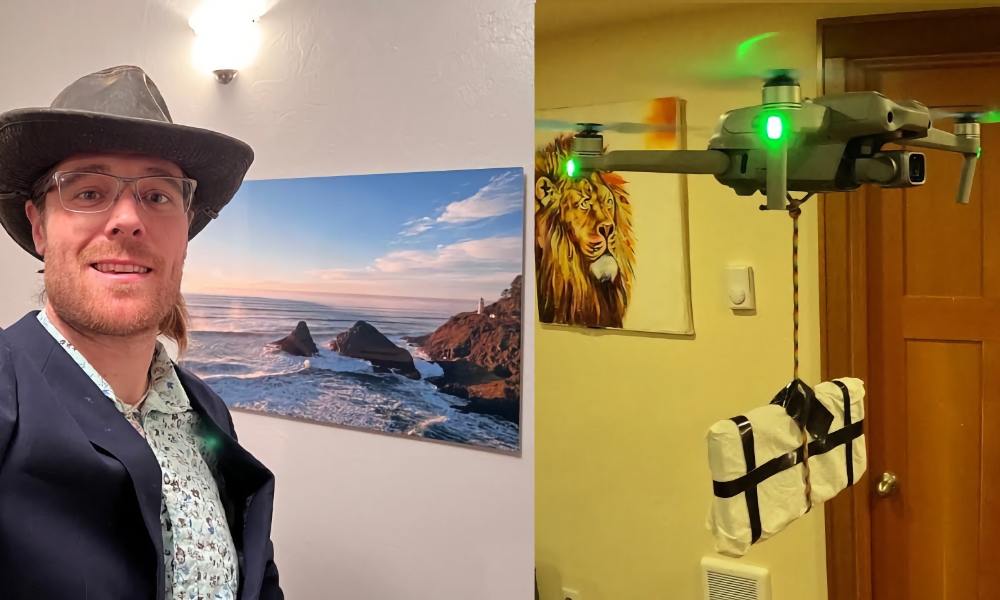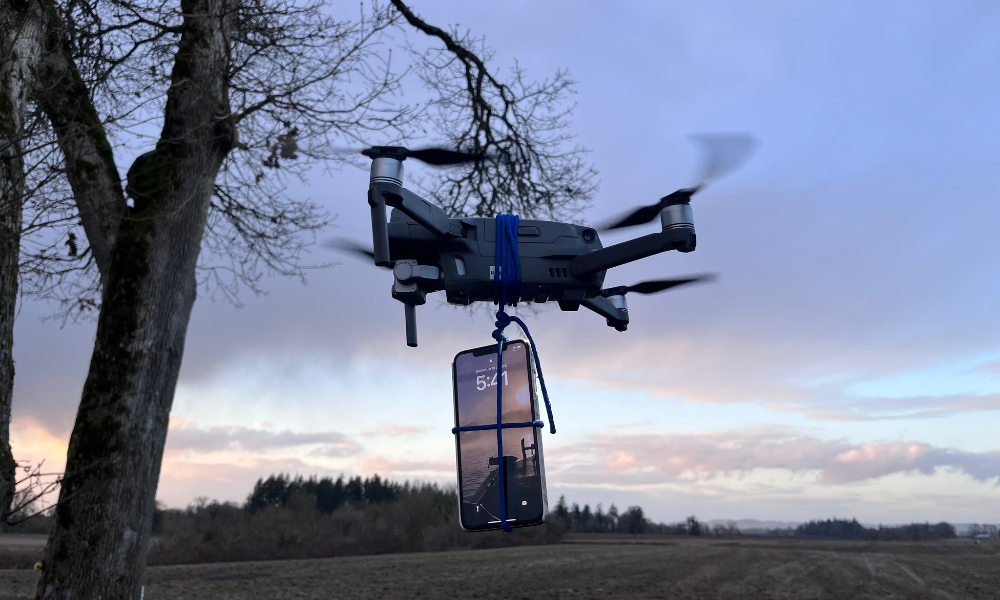This Stranded Photographer MacGyvered a Flying iPhone 13 to Call For Help
 Credit: Freighttrain Highway / YouTube
Credit: Freighttrain Highway / YouTube
Toggle Dark Mode
Earlier this year, a driver stranded in a remote part of Oregon came up with a clever and creative solution to summon help using his iPhone 13 while at the same time demonstrating precisely why the iPhone 14’s new Emergency SOS via Satellite is such a valuable feature.
As reported by The Washington Post, Casey Ryan, a 37-year-old photographer from Eugene, Oregon, had become stuck on a remote mountain road in the Willamette National Forest, about 30 miles from the closest town — an area with no cellular service.
Ryan and a friend had planned a short excursion to drive and bike around the region’s mountain roads, an area he was quite familiar with. After pressing on into icier conditions, the duo encountered a woman whose Mercedes was stranded on the snowy road; as Ryan was maneuvering his pickup truck to assist her, he reversed into a snowdrift and also became stuck.
After a couple of hours of trying to dig the truck free, the group realized they weren’t going to have much success, and as the temperature was dropping, Ryan came up with another solution.
In “a plan that would have made MacGyver proud,” the Post reports that Ryan wrapped his iPhone in a paper towel and then tied it to the small DJI Air drone that he had brought with him using duct tape and some cord. The group hoped that by sending the iPhone to a higher altitude, it would eventually latch onto enough cellular service to send out the text message that Ryan had written to his wife explaining the situation and requesting help.
The plan worked, although not right away. Ryan and his friend ended up spending the night in his truck, but volunteers from the Lane Country Sheriff’s office showed up the next day to pull them free. The Sheriff’s Search and Rescue department more recently announced the rescue on Facebook, gently chiding Ryan for travelling on a road that’s not maintained for winter travel while offering praise for his “smart decisions” and “ingenuity.”
I’ve been doing search and rescue since 2007 and this was by far the most unique way I’ve ever seen somebody call for help.
Jason Bowman, Lane County Sheriff’s Office search-and-rescue coordinator
According to the Post report, Ryan had left home properly equipped — he had survival gear and several days’ worth of food and water — but it was still important to summon help as soon as possible, not only for himself but also for the other woman he was trying to assist who had already been stranded in the snow for over a day.
It was Ryan’s friend who came up with the idea to use the DJI Air drone to send the iPhone 13 off for help on its own after recalling media reports of smugglers who used drones in the other direction — to drop phones into prison yards.
The plan also required some trial and error, as the DJI Air isn’t designed to carry such a heavy load. The drone refused to take off at all when the iPhone was taped to the top of it, but it seemed to have less of a problem with hanging it from the bottom.
It also didn’t take much for the iPhone 13 to pick up cellular service once it was aloft. Ryan was able to communicate with his wife by retrieving the drone, tapping out a reply, and then sending it aloft again to transmit the message. He repeated this process twice before the drone’s battery gave out and crash-landed into a soft patch of snow.
While Ryan’s solution was impressive, it would have been unnecessary had he been toting an iPhone 14. Apple’s Emergency SOS via Satellite is designed precisely for scenarios such as this and would have allowed Ryan to summon help by communicating directly with emergency services via text messages bounced back from satellites in low-earth orbit.
This would have likely also resulted in a faster rescue; while the group was well-equipped and never in any immediate danger, being forced to communicate with his wife via what amounted to an electronic carrier pigeon slowed things down a bit. Ryan had first asked his wife to call AAA to tow the two vehicles out, but it wasn’t until the next morning, when he sent the iPhone up again to check for a response, that he realized that AAA didn’t service the mountain road in the snow. It was only after that exchange that his wife called the Lane Country Sheriff’s office.







